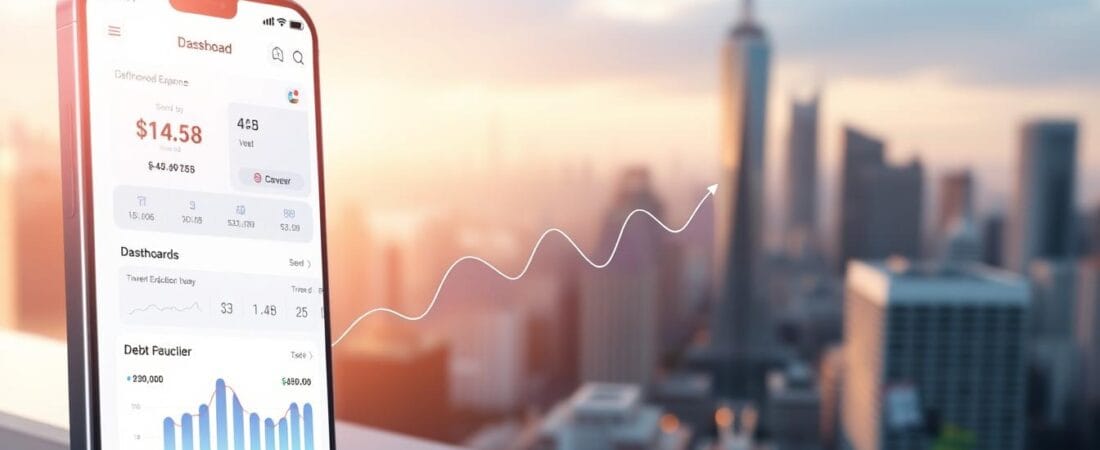The American debt crisis has reached alarming levels, with credit card debt alone surpassing $1 trillion. In response, consumers are turning to innovative budgeting apps designed to help manage and eliminate debt.
Unlike general budgeting tools, specialized debt management apps offer tailored features to tackle various forms of debt, from credit card balances to student loans.
This comprehensive guide evaluates the top apps for debt reduction, assessing their debt payoff features, user experience, cost, security, and integration capabilities.
Key Takeaways
- Overview of the most effective budgeting and debt management strategies in 2025
- Key features to look for in a debt reduction app
- How technology is revolutionizing money management and debt reduction
- Types of debt that can be managed with these apps
- Criteria used to evaluate the top budgeting and debt management apps
Understanding the Debt Crisis in America

As of 2025, the debt landscape in America presents a concerning picture. The average household debt has seen a significant rise, with various categories such as mortgage, credit card, student loans, and auto loans contributing to the overall debt.
The Current Debt Landscape
The total household debt in the United States has reached alarming levels. According to recent statistics, the average household debt stands at around $140,000, with mortgage debt being the largest component, followed by student loans, credit card debt, and auto loans.
Inflation and economic conditions over the past five years have significantly impacted consumer debt levels. Rising living costs and stagnant wages have led to increased reliance on credit, thereby escalating debt levels.
Psychological Impact of Debt
Debt has a profound psychological impact on individuals and families, causing stress, relationship strain, and limited financial options. The weight of debt can be overwhelming, affecting mental health and overall well-being.
“The burden of debt can be suffocating, making it challenging for individuals to achieve financial stability.”
Common Debt Traps
Consumers often fall into debt traps due to lack of financial literacy and proper budgeting tools. Traditional budgeting methods often fail without the right structure and tools, leading to a cycle of debt.
Digital tools and personal finance apps have evolved to address specific debt management challenges. There’s a growing demand for specialized budgeting apps that can help individuals manage their debt effectively.
Different generations have different approaches to debt management, with varying preferences for apps. Financial literacy gaps contribute significantly to debt problems, but technology is helping bridge these gaps.
Why You Need a Dedicated Debt Management App in 2025
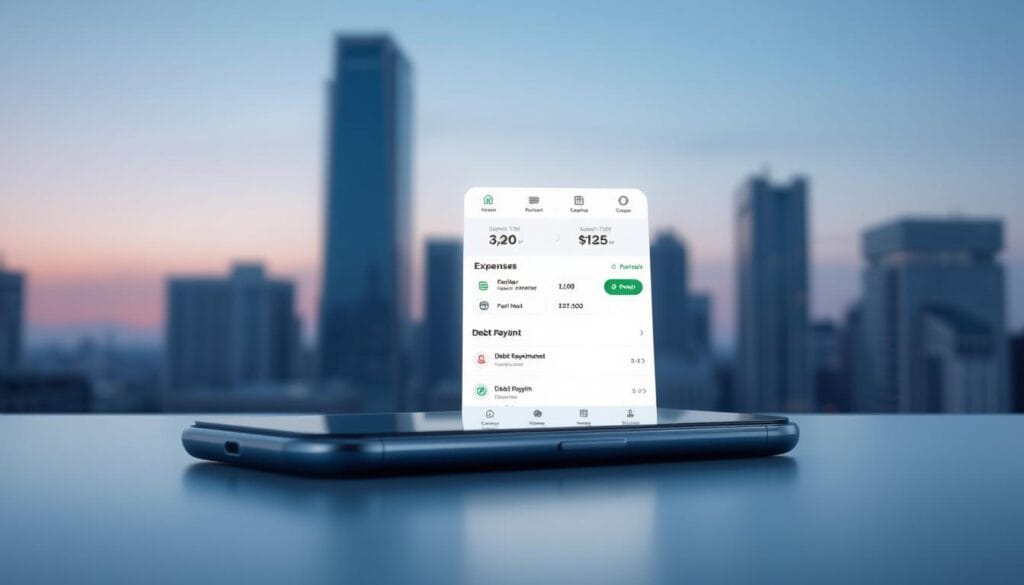
With the rising complexity of financial landscapes, using a dedicated debt management app in 2025 can significantly impact one’s financial health. As the economic conditions continue to evolve, the need for effective debt management strategies has become increasingly crucial.
Dedicated debt management apps differ significantly from general budgeting or banking apps in terms of their specialized features and focus. These apps are designed to provide users with a clear picture of their financial obligations, helping them prioritize debts and create a tailored plan to become debt-free.
The psychological benefits of using a dedicated app for debt management should not be underestimated. Such apps offer motivation, accountability, and visualization of progress, which are critical in maintaining user engagement and ensuring long-term success. As
“The key to success is to focus our conscious mind on things we desire not things we fear.”
– This mindset is particularly relevant when managing debt.
In 2025, the economic conditions make strategic debt management more crucial than ever before. Dedicated debt apps help users identify spending patterns that contribute to debt and suggest practical adjustments. By providing personalized strategies based on a user’s specific financial situation and goals, these apps enable users to make informed decisions about their finances.
Moreover, the integration capabilities of these apps with financial institutions make tracking and managing debt payments more seamless. Automated features in these apps reduce the cognitive load of debt management, increasing the likelihood of success. Effective budgeting is at the core of these apps, helping users manage their money more efficiently and make the most of their budget each month.
By leveraging a dedicated debt management app, users can take control of their finances, manage their accounts, and work towards a debt-free future. As the financial landscape continues to evolve, the importance of such apps will only continue to grow.
Key Features to Look for in the Best Personal Finance Apps for Debt Management 2025

As we navigate the landscape of personal finance apps for debt management in 2025, certain features stand out as essential for success.
One of the critical features is a comprehensive budgeting tool that helps users allocate their money more effectively towards debt repayment.
Effective apps also include debt payoff calculators, payment scheduling, and interest tracking, providing a holistic view of one’s financial obligations.
Visual tracking features, such as progress bars and graphs, enhance user motivation by illustrating progress towards goals.
Moreover, AI-powered spending analysis tools help identify areas where users can redirect funds towards debt payments, optimizing their financial strategy.
The best apps offer multiple debt reduction strategies, including the snowball and avalanche methods, allowing users to choose the approach that best suits their financial situation.
Regular notifications and reminders keep users accountable to their payment schedules and financial goals, ensuring they stay on track.
Additionally, educational resources within these apps improve financial literacy around debt management, empowering users to make informed decisions.
Some apps also feature community forums where users can share strategies and find support from others on similar debt reduction journeys.
Finally, detailed reporting features provide insights into debt reduction progress over time and projected payoff dates, helping users adjust their financial plans as needed.
How We Evaluated These Debt Management Apps
In our quest to identify the best debt management apps, we conducted a thorough evaluation based on several key criteria. Our assessment focused on the effectiveness of each app in helping users manage and pay off their debts, the user interface and overall user experience, the range of features offered, and the pricing models. We also considered user reviews and ratings from various sources to get a comprehensive view of each app’s performance.
To start, we looked at the core debt management features of each app, including debt tracking, payment reminders, and budgeting tools. We analyzed how well these features are integrated and how they contribute to the overall debt management strategy. For instance, some apps offer a holistic approach to financial management, incorporating budgeting and expense tracking alongside debt management.
For more information on personal finance apps that can aid in managing your money, you can visit our detailed guide.
YNAB (You Need A Budget)
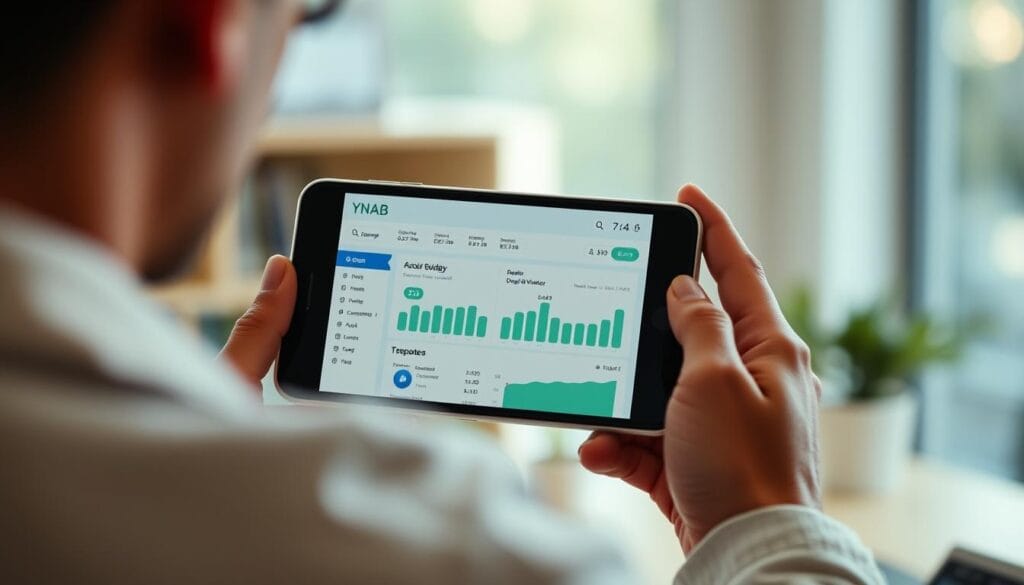
Overview
YNAB is a well-known budgeting app that also offers robust debt management features. It helps users manage their finances by assigning jobs to every dollar earned, ensuring that every cent is accounted for.
Key Debt Management Features
YNAB allows users to track their debts alongside their budgets, providing a comprehensive view of their financial situation. It offers features like automated savings, investment tracking, and detailed spending reports.
Pros
Effective Budgeting: YNAB’s budgeting system is highly effective in helping users manage their finances.
User-friendly Interface: The app is praised for its intuitive and user-friendly interface.
Cons
Steep Learning Curve: Some users find YNAB’s approach to budgeting challenging to grasp at first.
Cost: YNAB is a paid service, which might deter some potential users.
Pricing
YNAB offers a free trial, after which it costs $6.99/month or $83.99/year.
Best For
YNAB is best for individuals who are serious about managing their finances comprehensively and are willing to invest time in learning its budgeting system.
EveryDollar
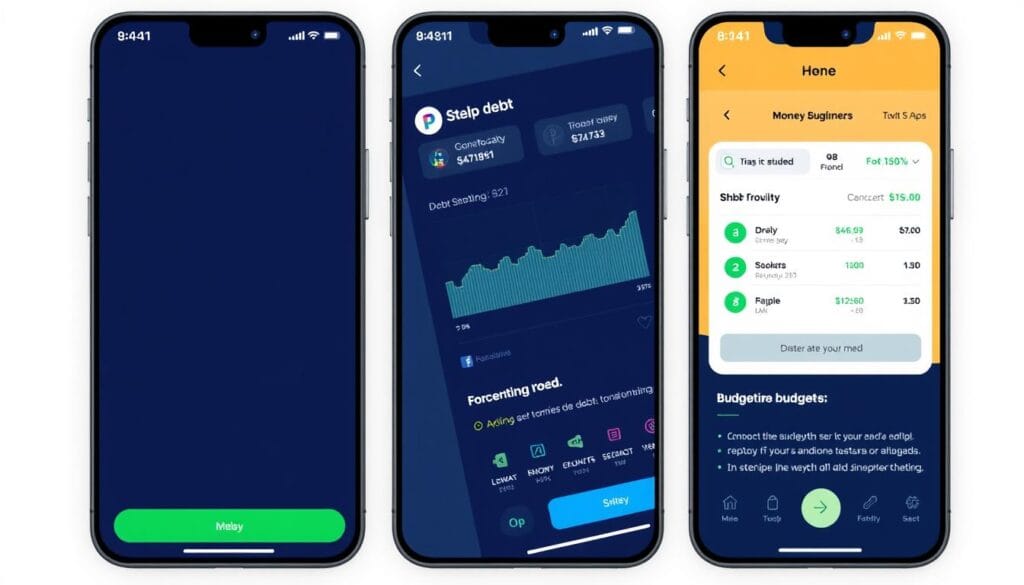
Overview
EveryDollar is a budgeting app created by financial expert Dave Ramsey. It offers a straightforward approach to budgeting and debt management.
Key Debt Management Features
EveryDollar allows users to create a budget and track their debt payments. It offers a premium version with additional features like automated expense tracking.
Pros
Simple and Intuitive: EveryDollar is praised for its simplicity and ease of use.
Alignment with Debt Snowball Method: The app is designed to work well with Dave Ramsey’s debt snowball method.
Cons
Limited Features in Free Version: The free version has limited features compared to the premium version.
Not Ideal for Complex Financial Situations: EveryDollar might not be the best choice for individuals with complex financial situations.
Pricing
EveryDollar offers a free version, while the premium version costs $129.99/year.
Best For
EveryDollar is best for individuals who prefer a simple, straightforward budgeting approach and are perhaps following Dave Ramsey’s financial principles.
Monarch Money
![]()
Overview
Monarch Money is a comprehensive financial management app that includes robust debt tracking features. It helps users manage their finances holistically.
Key Debt Management Features
Monarch Money allows users to track their debts, investments, and budgets in one place. It offers features like automated transaction tracking and detailed financial reporting.
Pros
Comprehensive Financial View: Monarch Money provides a holistic view of one’s financial situation.
Automated Tracking: The app’s automated transaction tracking is a significant convenience.
Cons
Learning Curve: Like YNAB, Monarch Money might require some time to learn.
Subscription-based: Monarch Money is a paid service.
Pricing
Monarch Money costs $9.99/month or $99.99/year.
Best For
Monarch Money is best for individuals who want a comprehensive financial management solution that includes debt tracking, budgeting, and investment tracking.
PocketGuard

Overview
PocketGuard is a personal finance app that helps users manage their finances, including debt. It offers a feature called “In My Pocket,” which shows users how much disposable income they have after accounting for bills and debt payments.
Key Debt Management Features
PocketGuard allows users to track their debts and offers features like automated expense categorization, which helps identify spending patterns that may contribute to debt.
Pros
Easy to Use: PocketGuard is praised for its simplicity and user-friendly interface.
Comprehensive Financial Overview: The “In My Pocket” feature provides a clear picture of one’s financial situation.
Cons
Limited Features in Free Version: While PocketGuard offers a free version, some features are only available in the paid Plus version.
Customer Support: Some users have reported mixed experiences with customer support.
Pricing
PocketGuard offers a free version, while its Plus version costs $12.99/month or $74.99/year.
Best For
PocketGuard is best for individuals who want a straightforward, easy-to-use app for managing their finances and debt.
Best Free Debt Management Apps
In the quest to become debt-free, selecting the right debt management app is crucial, and fortunately, several free options are available in 2025.

Two standout free debt management apps are Credit Karma and NerdWallet Money Tracker. Both offer comprehensive financial tools that help users manage their debt effectively.
Credit Karma

Overview
Credit Karma is a well-known personal finance app that offers a range of free tools, including credit monitoring and debt management features.
Key Debt Management Features
Credit Karma provides users with a comprehensive view of their credit reports and scores, helping them understand their financial standing. It also offers tools to track debt and provides personalized recommendations for debt consolidation and credit improvement.
Pros
Free access to credit scores and reports, comprehensive debt tracking features, and personalized financial recommendations.
Cons
While Credit Karma is robust, it may not offer the same level of dedicated debt management as specialized apps. Some features may require users to sign up for additional services.
Best For
Credit Karma is best for individuals looking for a comprehensive financial management tool that includes debt tracking and credit monitoring.
NerdWallet Money Tracker
![]()
Overview
NerdWallet Money Tracker is a free app that helps users track their finances, including debt, and provides educational content on managing financial obligations.
Key Debt Management Features
NerdWallet offers a comprehensive dashboard that allows users to track their debt, monitor their credit score, and receive personalized recommendations for debt products like consolidation loans and balance transfer cards.
Pros
Free access to credit scores, comprehensive financial tracking, and educational content on debt management strategies.
Cons
While NerdWallet is a powerful tool, it may not be as specialized in debt management as some other apps. The sheer amount of information available can be overwhelming for some users.
Best For
NerdWallet Money Tracker is ideal for users seeking a broad financial management tool that includes debt tracking and educational resources.
Best Apps for Credit Card Debt Management

Credit card debt can be overwhelming, but with the best apps for credit card debt management, users can regain control over their finances. Managing credit card debt effectively requires a comprehensive approach, and specialized apps are designed to provide the necessary tools and strategies to tackle this issue.
One of the primary challenges of credit card debt is the variable interest rates associated with different cards. Dedicated credit card debt apps help users track these rates and prioritize which cards to pay down first for maximum interest savings. Strategies like the debt avalanche (highest interest first) and debt snowball (smallest balance first) are implemented through these apps, allowing users to choose the method that best suits their financial situation.
Another critical feature of these apps is their ability to track balance transfers and manage promotional periods. This helps users avoid costly surprises when these periods end. By visualizing the true cost of making only minimum payments versus more aggressive payment strategies, users can make informed decisions about their debt repayment plans. For more information on debt repayment strategies, visit https://aimoneymatters.com/pay-off-debt-faster-with-debt-repayment-calculators/.
These apps also help users identify and avoid common credit card traps, such as fees, interest rate increases, and rewards programs that encourage spending. By integrating with credit monitoring services, they provide a comprehensive view of the user’s financial health and the impact of credit utilization on their overall finances.
Furthermore, budgeting features within these apps are specifically designed to help users reduce their reliance on credit cards for everyday expenses. By managing their budget effectively, users can allocate more funds towards debt repayment, thereby accelerating their journey to becoming debt-free.
Best Apps for Student Loan Debt Management

Managing student loan debt has become a significant challenge for many Americans. With the rising burden of student loan debt, specialized apps have emerged to help borrowers manage their finances effectively. These apps are designed to address the unique challenges of student loan debt management, providing tools and features that simplify the repayment process.
One of the primary benefits of using a student loan debt management app is the ability to navigate complex repayment options. These apps help users understand and manage income-driven repayment plans, forgiveness programs, and deferment or forbearance tracking. By providing a comprehensive overview of these options, borrowers can make informed decisions about their debt repayment strategies.
Optimizing payment strategies across multiple loans with different terms and interest rates is another key feature of these apps. They help users understand the long-term impact of extra payments and how to allocate additional funds for maximum benefit. This budgeting feature is crucial for borrowers who want to pay off their loans efficiently.
Staying informed about policy changes and new programs that might affect their student loan repayment strategy is also vital. The best student loan debt management apps keep users updated on these changes, ensuring they can adjust their strategies accordingly. Furthermore, these apps often include refinancing calculators and recommendations that help users determine if consolidating or refinancing their student loans would be beneficial.
For those working in public service, some apps offer Public Service Loan Forgiveness (PSLF) tracking features. These features help eligible users ensure they’re meeting the program’s requirements, making it easier to achieve loan forgiveness. By utilizing these tools, borrowers can better manage their accounts and make timely payments, ultimately achieving financial stability.
For more information on managing debt, you can visit our guide on Best Debt Consolidation Loans for 2025 to simplify your finances.
Debt Payoff Strategies Using Personal Finance Apps
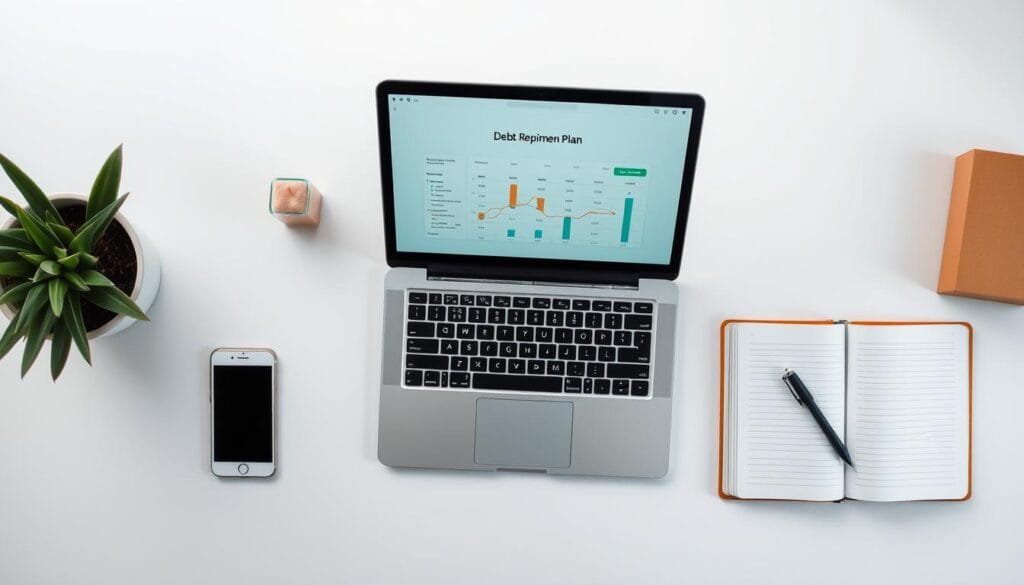
Personal finance apps have revolutionized the way we manage debt, offering tailored strategies for a debt-free life. By leveraging these apps, individuals can implement proven debt reduction strategies such as the debt snowball, debt avalanche, and debt consolidation.
To create a personalized debt payoff plan, users can utilize app features that analyze their financial situation and psychological motivations. For instance, budgeting tools within these apps help identify areas of unnecessary spending, often referred to as “money leaks,” which can then be redirected towards accelerated debt payments.
Setting up automated payment systems is another crucial step in ensuring consistency in debt reduction plans while minimizing the risk of missed payments. Additionally, goal-setting features allow users to create realistic debt payoff timelines and celebrate meaningful milestones along the way. For more insights on managing finances, you can explore effective payment apps.
Furthermore, notification systems within these apps help users stay motivated and accountable to their debt reduction commitments. Reporting features enable individuals to track their progress and make data-driven adjustments to their strategy when necessary. By combining multiple apps’ strengths, users can create a comprehensive debt management system tailored to their specific needs.
Effective budgeting and a well-structured plan are key to becoming debt-free within a set timeframe, such as a month or a year. By utilizing personal finance apps and their various features, individuals can take control of their finances and make significant progress in managing their debt.
How to Integrate Debt Management Apps with Your Overall Financial Plan
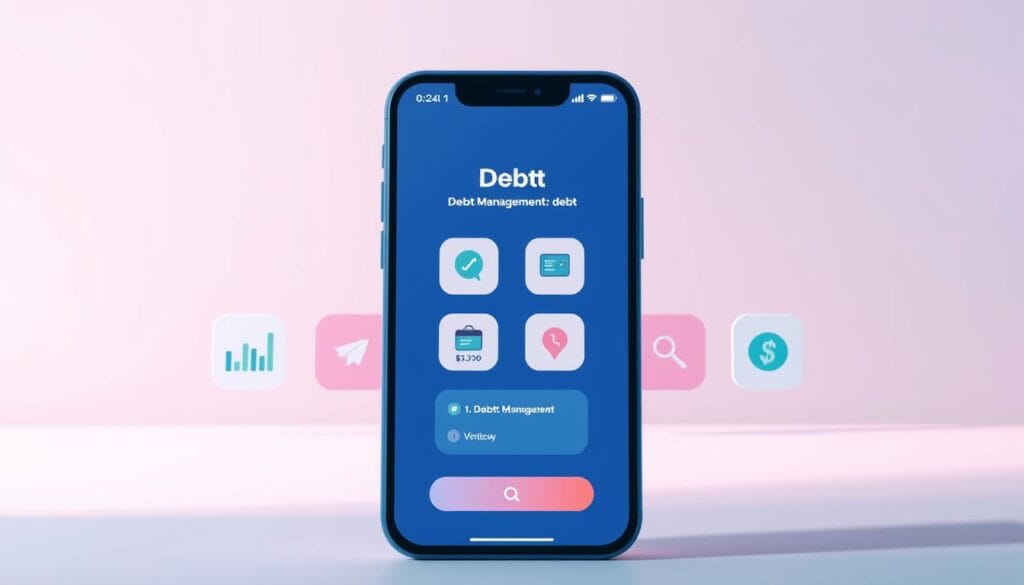
By integrating debt management apps with your overall financial plan, you can optimize your financial resources and achieve your financial goals more efficiently. This integration is crucial for creating a holistic financial strategy that addresses not only debt repayment but also other critical financial objectives such as emergency savings and retirement planning.
To achieve a balanced financial approach, it’s essential to use debt management apps in conjunction with other financial tools. For instance, you can sync debt management apps with investment and retirement planning tools to ensure that you’re allocating your resources optimally. This comprehensive financial management system allows you to project the long-term impact of debt reduction on your overall financial picture.
When using debt management apps, it’s vital to balance aggressive debt payoff with other financial priorities. App features can help you allocate your resources effectively, ensuring that you’re not creating new debt while paying off existing obligations. For couples, using debt management apps can be a collaborative process, helping you tackle debt together and achieve your shared financial goals.
As you progress from active debt payoff to debt-free financial management, you can transition your app usage to focus on other financial objectives. By doing so, you’ll be able to maintain a balanced budget and continue to work towards your long-term financial goals, such as saving for retirement or building an emergency fund.
In conclusion, integrating debt management apps into your overall financial plan is a strategic step towards achieving financial wellness. By leveraging these apps and aligning them with your broader financial objectives, you can create a robust financial plan that supports your goals and enhances your financial stability.
Security Considerations for Financial Apps
![]()
In an era where financial apps are ubiquitous, assessing their security protocols is essential for protecting sensitive information. As users entrust these apps with their financial data, understanding the associated security risks becomes crucial.
Financial apps, particularly those for budgeting and debt management, require robust security measures.Encryption standardsandmulti-factor authenticationare critical features that reputable apps should implement. These features ensure that user data is protected from unauthorized access.
When connecting to bank accounts, financial apps typically use API connections or data aggregators. Understanding the security implications of these methods is vital. Users should be aware of how their data is being handled and stored.
Reviewing an app’s privacy policy is also essential. Users need to understand what personal and financial data is collected, stored, and potentially shared with third parties. Being informed helps in making better decisions about which apps to trust.
To further enhance security, users should adopt best practices such as creating strong passwords, regularly updating their apps, and ensuring their devices are secure.
In the event of a data breach, knowing the steps to protect accounts and personal information is crucial. Understanding the regulatory landscape for financial apps and the applicable consumer protections can also provide additional security layers.
Ultimately, finding a balance between convenience and security is key when choosing and using debt management apps. By being aware of the potential security risks and taking proactive measures, users can better safeguard their financial information.
Success Stories: How These Apps Helped Real People Pay Off Debt
The effectiveness of personal finance apps in debt management is best illustrated through real-life success stories. Individuals and families have successfully used these budgeting apps to eliminate significant debt, achieving financial freedom.
One compelling case study involves a user who paid off $10,000 in credit card debt within 18 months using a popular personal finance app. The app’s features, such as automated budgeting and spending tracking, played a crucial role in their success. “I was able to see exactly where my money was going each month and make adjustments accordingly,” the user reported.
These success stories often highlight the importance of setting realistic financial goals and using app tools to stay on track. Over time, users develop long-term financial habits that help them remain debt-free. As one individual noted, “Using the app for a year helped me understand my financial habits and make lasting changes.”
By leveraging the insights and tools provided by these apps, individuals can overcome common obstacles and achieve significant progress toward debt freedom. As they progress, users experience psychological and emotional benefits, including reduced financial stress and increased confidence in their financial management abilities.
“The app helped me take control of my finances and achieve my financial goals.”
The Future of Debt Management Technology
The future of debt management technology holds much promise, with advancements in AI, machine learning, and open banking set to transform the industry. As we look beyond 2025, we can expect debt management apps to become even more personalized and proactive in their approach to debt reduction.
One of the key drivers of this change will be the integration of artificial intelligence (AI) and machine learning into debt management apps. These technologies will enable apps to analyze user data and provide tailored recommendations for debt repayment, helping users to make more informed financial decisions. For instance, a user could benefit from exploring low-fee robo-advisors that align with their financial goals.
Another significant trend is the adoption of open banking initiatives, which will improve data connectivity between apps and financial institutions. This will create a more seamless debt management experience, allowing users to track their finances in real-time and make adjustments as needed.
“The incorporation of behavioral economics principles into app design will also play a crucial role in helping users overcome psychological barriers to debt reduction.” By understanding user behavior and providing personalized support, debt management apps can help individuals stay on track with their debt repayment plans.
The potential impact of blockchain and decentralized finance on debt management should also not be overlooked. These technologies could create new options for refinancing and consolidation, giving users more flexibility in managing their debt.
As debt management technology continues to evolve, we can expect to see new and innovative solutions emerge. By staying ahead of the curve, individuals can take advantage of the latest tools and strategies to manage their debt more effectively.
Conclusion: Taking Control of Your Debt in 2025
The year 2025 brings new challenges and opportunities for managing debt, with personal finance apps emerging as a key tool in this endeavor. Throughout this article, we’ve explored how these apps can transform debt management by offering budgeting features, tracking expenses, and setting financial goals.
When selecting a debt management app, it’s crucial to prioritize features that align with your specific financial situation and debt profile. Combining the right app with consistent financial habits creates the most effective path to debt freedom. For instance, exploring options like those discussed in our analysis of top credit card debt relief options for can provide valuable insights.
While technology plays a significant role, it’s essential to maintain realistic expectations about what it can achieve. The broader economic benefits of reducing personal debt are substantial, contributing to individual financial wellness and long-term wealth building. By leveraging these tools and maintaining momentum, individuals can achieve not only financial stability but also the psychological freedom that comes with it.

